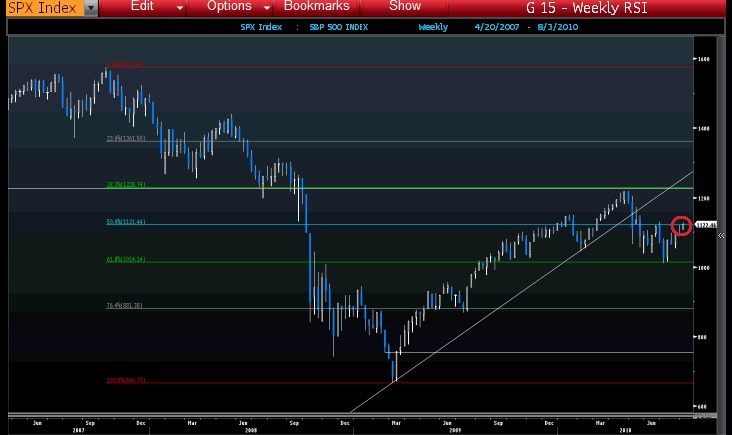Here we are back on the 50% retracement line at 1,121 on the S&P. As Barry Ritholtz points out, it’s the 5th time we’ve been here and, as I said yesterday, Barry says “Its going to take a lot of something — good earnings, liquidity, sentiment, breadth, momentum, psychology, quantitative easing, something – to move higher from here.” Also great on Barry’s site today is a very neat summation of the housing crisis and his take on Timmy G’s NY Times Op Ed column, which I need to add my own .02 to.
Mr. Geithner tries to give us that “something” Barry and I are looking for by boldly stating: “Welcome to the Recovery,” writing that “uncertainty is understandable, but a review of recent data on the American economy shows that we are on a path back to growth.” He continues:
While the economy has a long way to go before reaching its full potential, last week’s data on economic growth show that large parts of the private sector continue to strengthen. Business investment and consumption — the two keys to private demand — are getting stronger, better than last year and better than last quarter. Uncertainty is still inhibiting investment, but business capital spending increased at a solid annual rate of about 17 percent.
• Exports are booming because American companies are very competitive and lead the world in many high-tech industries.
• Private job growth has returned — not as fast as we would like, but at an earlier stage of this recovery than in the last two recoveries. Manufacturing has generated 136,000 new jobs in the past six months.
• Businesses have repaired their balance sheets and are now in a strong financial position to reinvest and grow.
• American families are saving more, paying down their debt and borrowing more responsibly. This has been a necessary adjustment because the borrow-and-spend path we were on wasn’t sustainable.
• The auto industry is coming back, and the Big Three — Chrysler, Ford and General Motors — are now leaner, generating profits despite lower annual sales.
• Major banks, forced by the stress tests to raise capital and open their books, are stronger and more competitive. Now, as businesses expand again, our banks are better positioned to finance growth.
• The government’s investment in banks has already earned more than $20 billion in profits for taxpayers, and the TARP program will be out of business earlier than expected — and costing nearly a…





